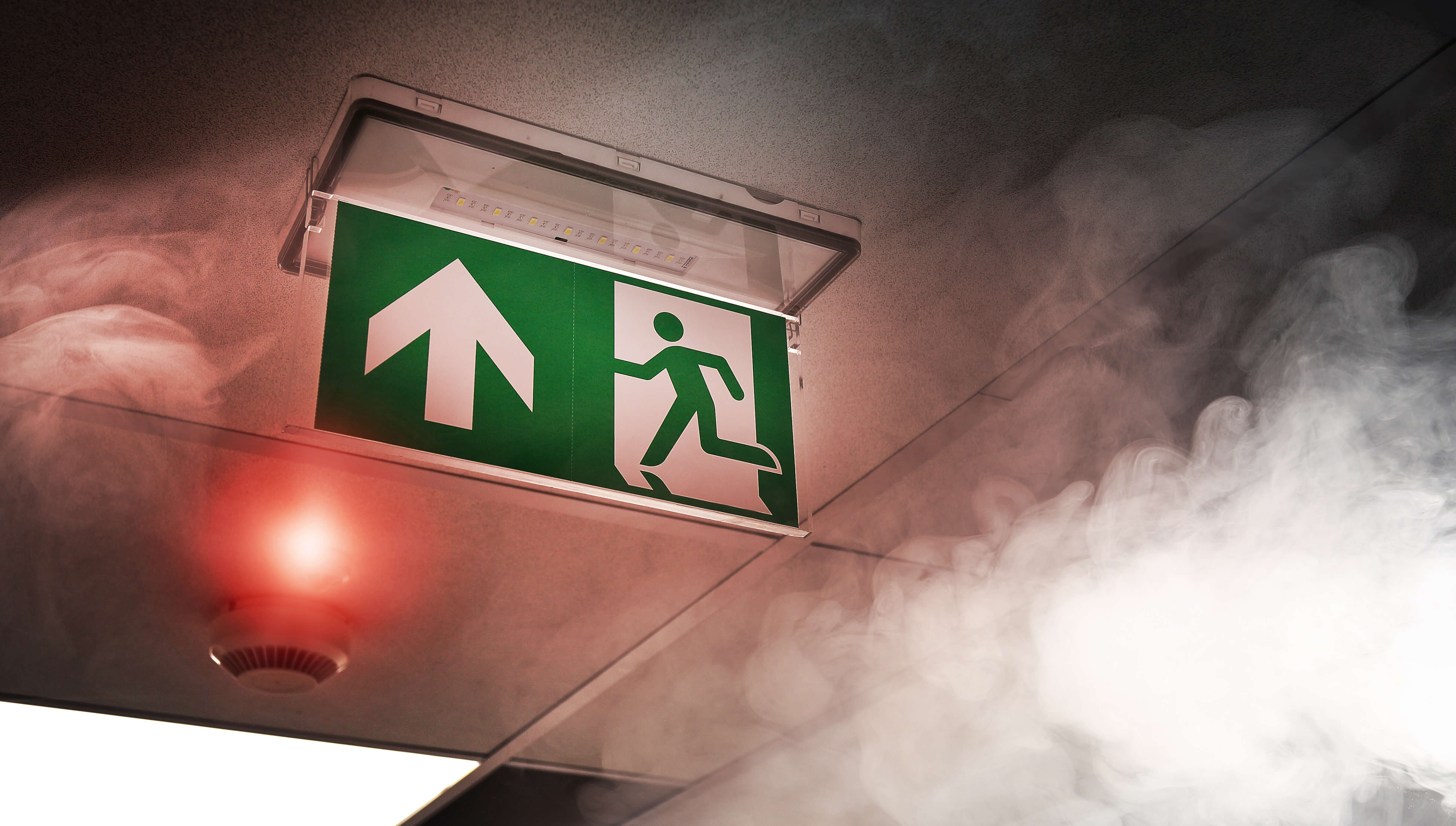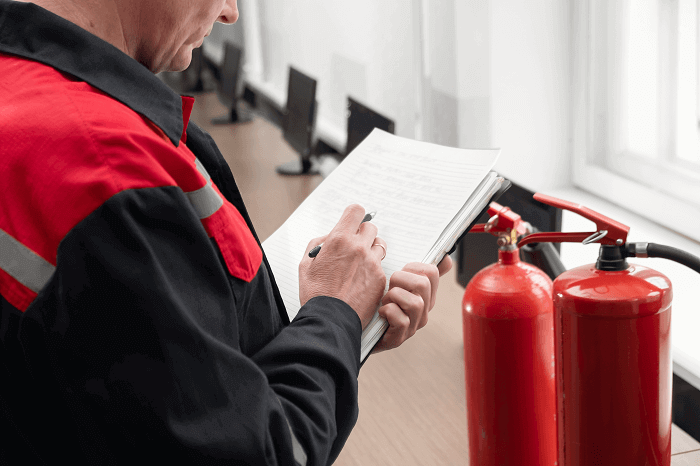If you’re reading this, and you’re an employer, you—yes you—are responsible for the fire safety in your business.
You’re not alone in this responsibility. Or, you don’t have to be.
Anyone with control of the premises is also responsible, and you can assign a ‘responsible person’ to manage the risks too.
If you’re struggling to decide who to nominate—a health & safety manager or coordinator is usually a good choice.
However, just because you assign responsibility to someone else, doesn’t mean you’re off the hook. Ultimately, the duty (and blame) will lie with you.
Fire safety in the workplace
Where do I start?
First, let’s take a look at your responsibilities. You must:
- Carry out and review fire risk assessments regularly
- Inform staff of their immediate representatives and any risks
- Create and maintain appropriate fire safety measures
- Have an emergency plan in place
- Provide information, fire safety instruction and training to staff
Important: you are also responsible for the safety of any visitors and contractors to the premises, or paying guests.
Detection and warnings
Legally, you must assess the need for automatic fire detection (AFD) and warning systems. Do I need them and if so which one? Well, that’s really dependant on your workplace.
Your fire risk assessment should be able to highlight which system is right for you.
It’s also important that—once installed—a fire alarm is tested weekly.
Setting a fixed time and day per week is usually best, as this means all employees and visitors are aware of the test.
A fire detection system isn’t the only equipment you should install.
It’s vital that employees have access to:
- Fire extinguishers
- Emergency lighting
- Appropriate signage
- Visible and unblocked emergency exits & fire doors
Fire safety policy
Having a policy underlines your commitment to fire safety and educates your employees.
Your policy should state that if a fire does occur, the safety of life will be the most important consideration. It should also detail the following:
- Preventative measures
- Protective measures
- Procedure in the event of a fire
- Fire safety training
- The monitoring and reviewing of all measures and procedures
Remember: A fire safety policy is not a replacement for a fire risk assessment. These should still be conducted regularly and reviewed when appropriate.
Maintenance
So, you’ve conducted a fire risk assessment. You’ve highlighted all problem areas and actioned them. You’ve installed all the appropriate equipment. And, written a fire safety policy and made it accessible.
What now?
General housekeeping is vital to fire safety, as well as the overall health & safety of your workplace.
Excess waste can be a fire hazard, especially with materials such as cardboard, paper, or wood.
Not only is it a fire hazard, a messy workplace can present trip hazards and restrict access to fire escapes.
Ensure your workplace is kept clean and tidy for maximum fire safety.
Fire wardens
In a larger company or building, it might be too much for you to keep track of everything all by yourself.
We mentioned before that you can appoint more than one responsible person, you can do this via fire wardens.
These individuals can be responsible for any number of things. They could just be there to help in the event of an evacuation. Or, they could help carry out regular checks on fire safety equipment and procedures.
Some responsibilities could include:
- Checking the functionality of emergency lighting
- Testing of fire alarms, meeting points, and sounders
- Checking functionality and accessibility of fire extinguishers
- Testing the fire exit routes and fire doors
Fire wardens can also be incredibly useful during holidays or periods of sickness. If you’re off-site, it’s good to know there’s a responsible person on-site to manage the risk.
Expert support
If you have any questions about fire safety, need help with training, or feel your policies and procedures aren’t up to scratch, speak to a Croner health & safety expert today on 01455 858 132.
Related resources
Categories
- Business Advice
- Contracts & Documentation
- Culture & Performance
- Disciplinary & Grievances
- Dismissals & Conduct
- Employee Conduct
- Employment Law
- End of Contract
- Equality & Discrimination
- Health & Safety
- Hiring & Managing
- Leave & Absence
- Managing Health & Safety
- Moving
- Occupational Health
- Pay & Benefits
- Recruitment
- Risk & Welfare




